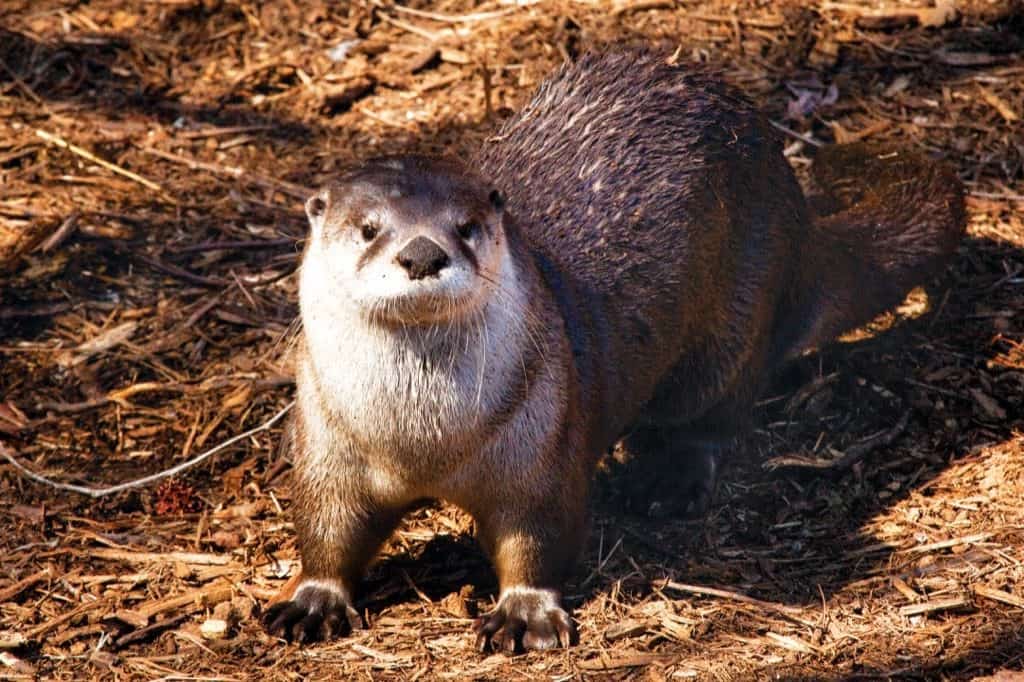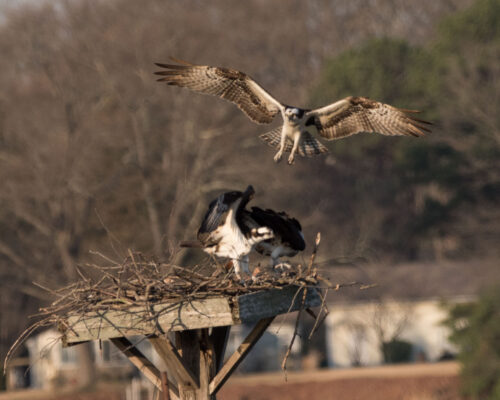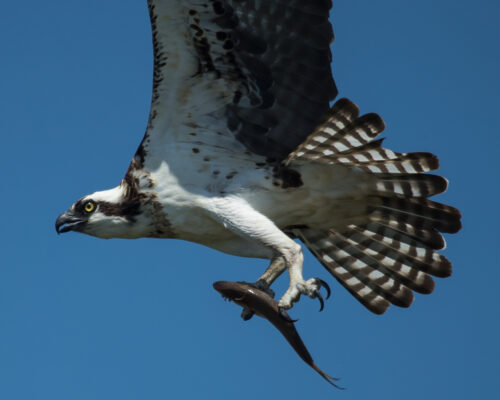Let’s go where the river otters go.
Have you seen round five-toed tracks on the beach, leading to a dune where sand and grasses are all torn up in a circle? A dog’s trail perhaps? No, they have only four toes, and their tracks are oval. A raccoon’s? No, their “fingers” are long and narrow. Look closely around the dune. Might there be a pile of small fish scales and bones somewhere in the circle? What kind of critter is this? Why does it act this way?
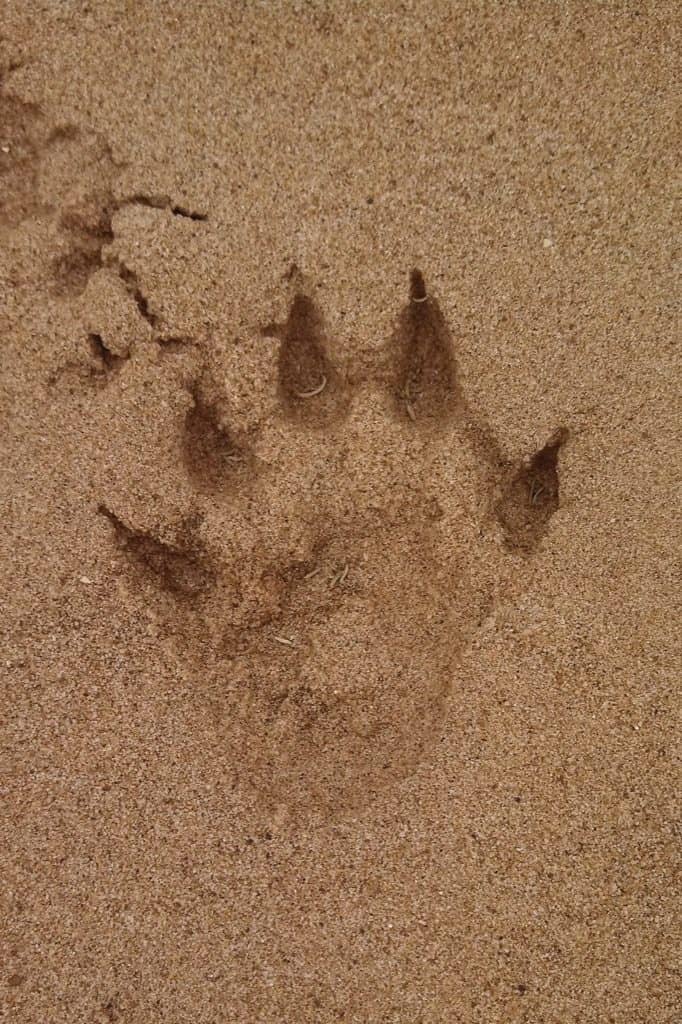
These subtle indicators are what wildlife biologists call “sign,” and they are easy to overlook. Half of getting tuned into the natural history of the Chesapeake simply comes from slowing down and looking around. Gradually, sign like the tracks and the fish bones bring the animal and its
lifestyle into focus. The tracks belong to a river otter. These furbearers are well-distributed around the Chesapeake and its river systems, including the Susquehanna, but at this time of year, they see more of us than we see of them. In warm weather, river otters are most active at dusk, night, and dawn. Thus, early morning beach walks are best for finding fresh tracks. These frequently show a pattern of bounding, in which the animal’s long, sinuous body undulates so that the hind paws come down just behind where the front paws landed as the animal springs forward for another bound.
The tracks often lead to a spot where the otter stops to roll around on sand and grass to dry out a bit. Hence the messy-looking appearance of the area, which may also serve as a “spraint,” a biologist’s scientific euphemism for an otter’s latrine. The little piles of scales and bones constitute “scat,” or material that has made its way through the otter’s durable digestive tract.
An otter’s coat consists of inch-long, stiff guard hairs and denser, shorter underfur with more than 300,000 hairs per square-inch. That furry wetsuit protects them in winter, when drying out helps to preserve insulation, but it is less important now, with water temperatures headed to the mid-seventies and up.
For the most part, river otters are social animals. Behavioral studies indicate that rolling around on grass and sand, urinating, and dropping scat serve to mark territories for family recognition and communication more than for defending an area. In early summer, family groups are generally made up of a female with new-born pups just beginning to get into the water and staying close to their den. The females keep mature males and the previous year’s young away from the pups till fall. Thus, tracks on the beaches and spraints tend to be made by bachelors who can range as far as thirty miles in a week, foraging to keep their high metabolisms primarily fueled with fish supplemented by shellfish, crayfish and frogs. Their diets vary with seasonal abundance of different prey. What counts in the otter’s diet is getting the most nutrition with the least expenditure of energy, so they favor slow-moving meals such as killifish, sunfish, white perch, and spot in the three- to six-inch range. At this time of year, they’ll also eat crabs, especially vulnerable softies and paper-shells (buckrams). They’ll eat small fish in the water, generally head-first, but they come onto the beach for larger prey.
Since otters live primarily on fish, they must be impressively adapted to swimming underwater. They measure three to five feet in length and weigh 15 to 30 pounds, with females typically 25 to 30 percent smaller than males. Of that length, one-third is tail, a thickly muscled, tapered rudder. Their legs are short but powerful with webbed feet and claws. The flexibility that enables their bounding terrestrial gait is most useful in the water where the streamlined animals can swim as fast as seven miles per hour, dive as deep as 60 feet, stay underwater for four minutes and travel as far as a quarter-mile in one breath. Propulsion comes from whatever combination of paddling with feet and up-and-down body-and-tail movement meets the needs of the moment. At the surface, they remain mostly concealed, with only the tops of their flat heads including nostrils, eyes, and ears, above the surface.
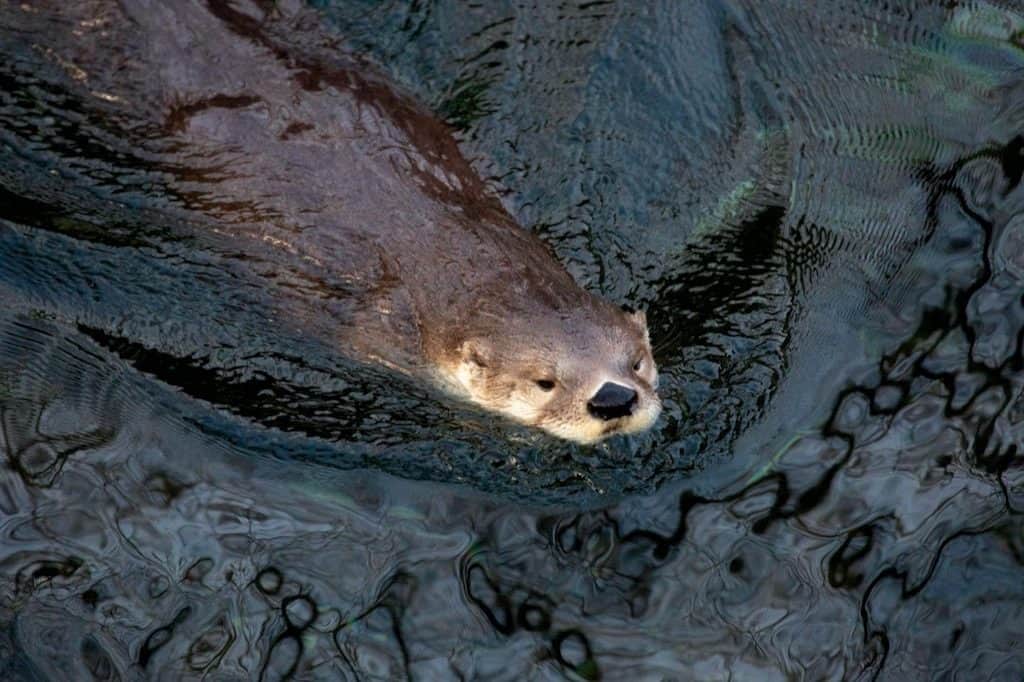
When submerged, the otter’s ears and nostrils close to exclude water, and its extra, transparent eyelids cover its eyes. The lenses are geared for underwater vision, which makes them slightly nearsighted above water. The lungs and metabolism have adaptations that allow them to stay submerged longer than most other mammals. The forepaws are sensitive and flexible for feeling and manipulating prey. Look closely at a photograph of an otter’s face and you’ll notice a forest of whiskers around its mouth. These too aid in feeling out surroundings and prey underwater. The jaws are powerful, equipped with sharp canine teeth for killing prey and molars for crushing shells and bones.
Otters in the wild live about eight years. Captive otters might live as long as 25 years. They have few predators. Even the remaining Chesapeake commercial trappers take little interest in them, since they are hard to outwit and the price for their pelts is relatively low. The otter’s greater threat is the loss of habitat and prey from human shoreline disturbance and poor water quality. As with many other Bay creatures (including ourselves), improvements to the ecosystem benefit our still-very-wild river otters. Just coming across their sign on a June morning’s beach walk is an encouraging indication that we’re moving in the right direction.
CBM Editor at Large John Page Williams is a licensed captain and Maryland fishing guide. He has been on staff at the Chesapeake Bay Foundation as an educator, writer and senior naturalist, saving the Bay since 1973.

